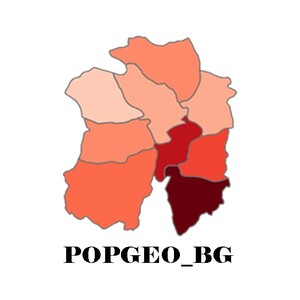
The project aims at historicizing population geography of Ottoman and post-Ottoman Bulgaria and at producing a spatial narrative of population dynamics that accounts for country’s spatiotemporal dimensions of population fluctuation trends, density variations with regard to geotemporal circumstances, household structure and its spatial and temporal transformations, and last but not least, it detects human migration from and to the country, as well as internal displacement over a large time period. Benefitting from a longitudinal record which extends through a long historical period (1500–1920), the project embarks on establishing patterns of Bulgaria’s population dynamics, while at the same time, by utilizing Historical GIS (HGIS) applications, it allows for the tracking of changes not only over time but also across space, and so offers a new perspective on the interaction between population developments related to climatic, environmental, natural, socioeconomic and political processes. Hence, it aims at carrying fundamental research that will expand the frontiers of scientific knowledge and will offer benefits to scientific understanding of historical population dynamics, accounting for the geospatial and temporal patterns in these processes. The massive spatially referenced database combines data from hitherto underutilized Ottoman taxation and population registers and Bulgarian national censuses by extracting population data per individual settlement. The project not only seeks to fill in a gap in the population geography of modern Bulgaria’s territory during the Ottoman and post-Ottoman period, but also offers a methodological solution for the exploitation of Ottoman population and tax records for reliable population data of other parts of Southeastern Europe.
The project began in June 2019 at Koç University in Istanbul after it received third-party funding under Horizon 2020: EU Programme for Research and Innovation, Marie Skłodowska-Curie Actions-IF. Following Dr. Boykov’s relocation to Vienna in November 2019 the project is carried out under the auspices of the Institute for Habsburg and Balkan Studies (IHB), at the Austrian Academy of Sciences (ÖAW).